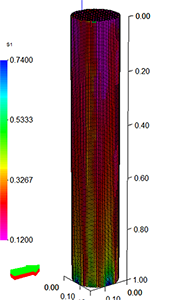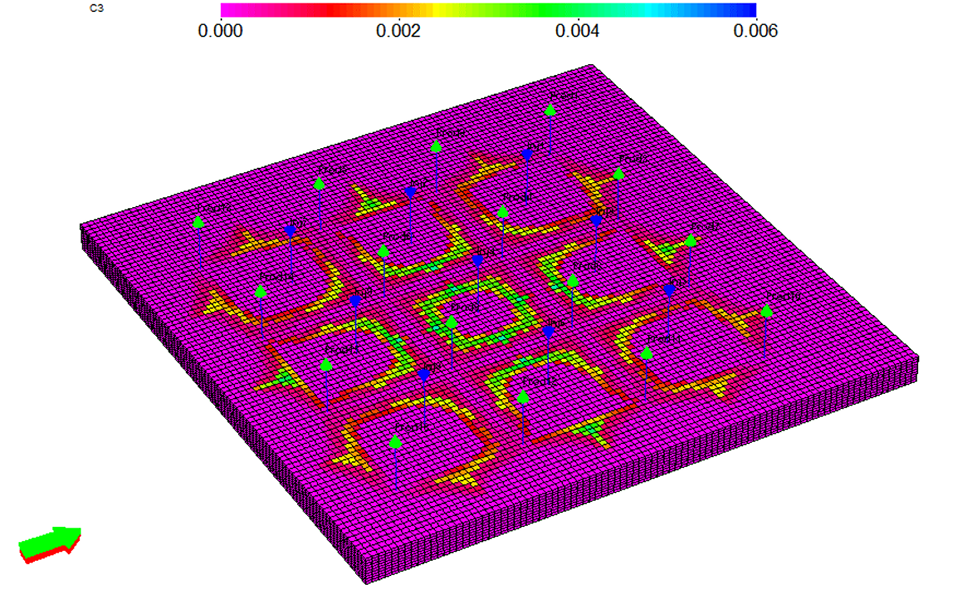UTCHEM is a multicomponent, multiphase, three-dimensional chemical compositional reservoir simulation model. The flow and transport equations are as follows:
- A mass conservation equation for each chemical species
- An overall mass conservation equation that yields a pressure equation when combined with a generalized Darcy's law
- An energy conservation equation
Four phases are modeled. The phases are a single component gas phase and up to three liquid phases - aqueous, oleic, and microemulsion - depending on the relative amounts and effective electrolyte concentration (salinity) of the surfactant/oil/water phase environment. The key to accurate and realistic chemical flooding is to model the complex microemulsion phase behavior and the various properties associated with these phases (such as interfacial tension, relative permeability, capillary pressure, capillary desaturation and viscosity) and factors that determine the behavior of the species in these phases such as dispersion, adsorption and cation exchange.
The resulting flow equations are solved using a block-centered finite-difference scheme. The solution method is implicit in pressure and explicit in concentration (IMPES-like). A third-order spatial discretization is used and in order to increase the stability and robustness of the third-order method, a flux limiter based on the total-variation-diminishing scheme has been added. UTCHEM has been widely used to simulate laboratory and field scale processes such as water flooding, tracers in water, polymer, surfactant/polymer, profile control using gel, and high pH alkaline/surfactant/polymer. The code has also been modified for applications to groundwater contamination and remediation. Some of the applications of UTCHEM are:
- Surfactant flooding
- High pH alkaline/surfactant/polymer flooding
- Polymer flooding
- Conformance control using polymer gels
- Tracer tests
- Formation damage
- Soil remediation
- Microbial enhanced oil recovery
- Surfactant/foam


3D viscous-oil polymer coreflood Simulation (left) and 3D surfactant-polymer flood field simulation (surfactant concentration)(right)


